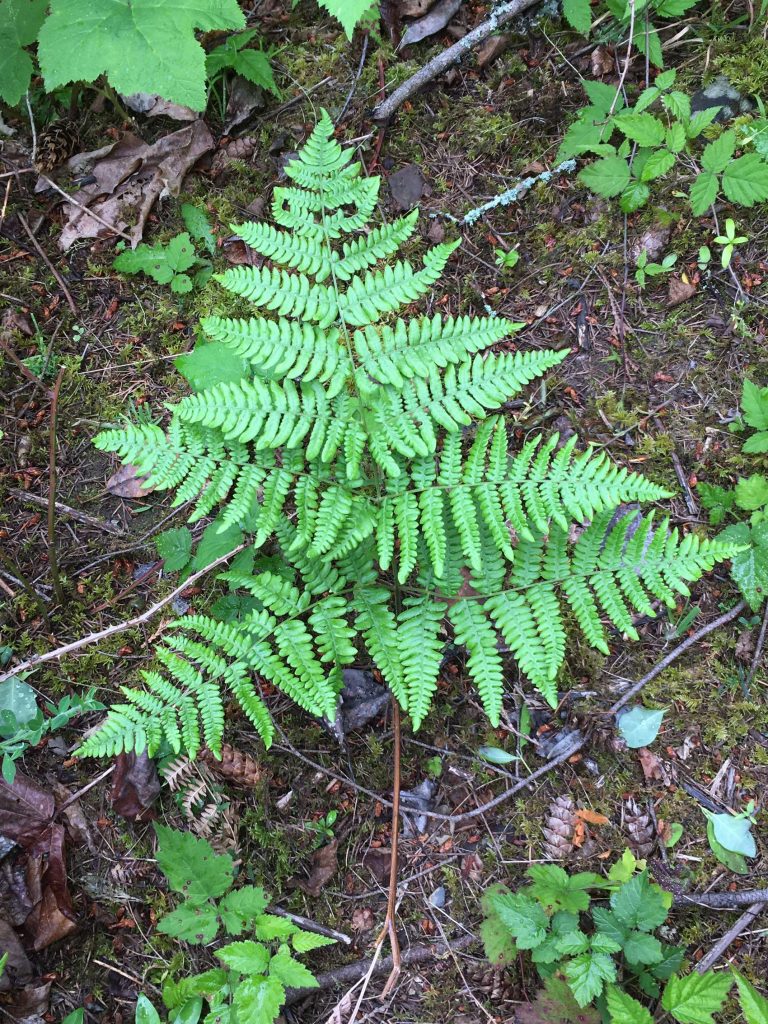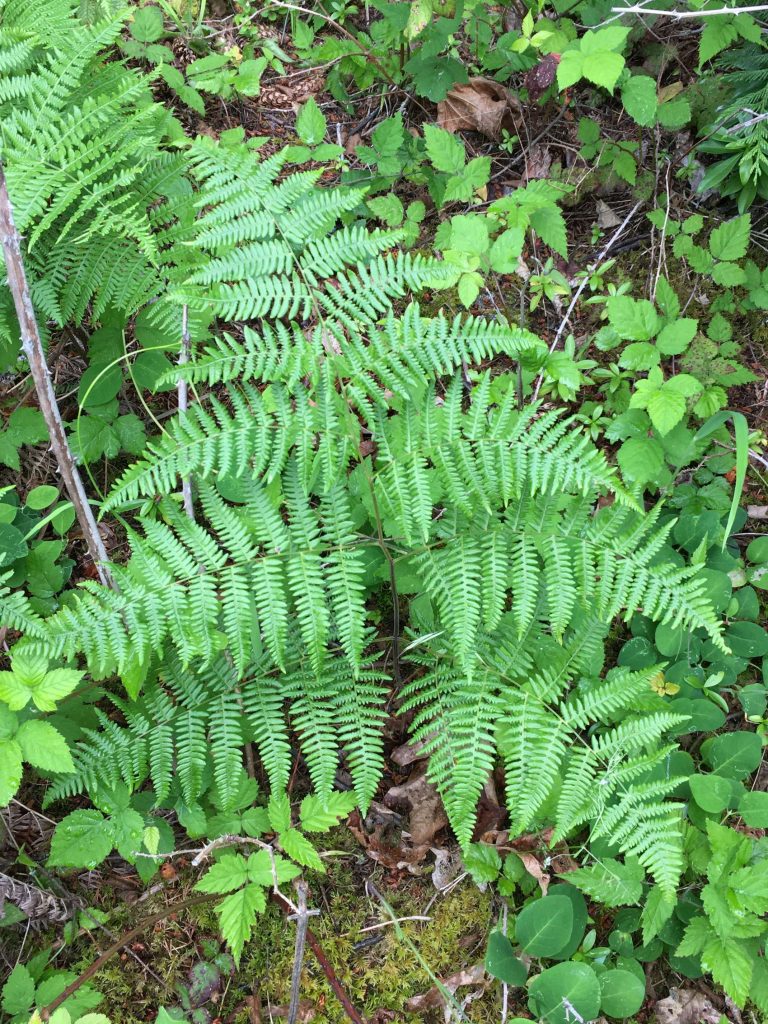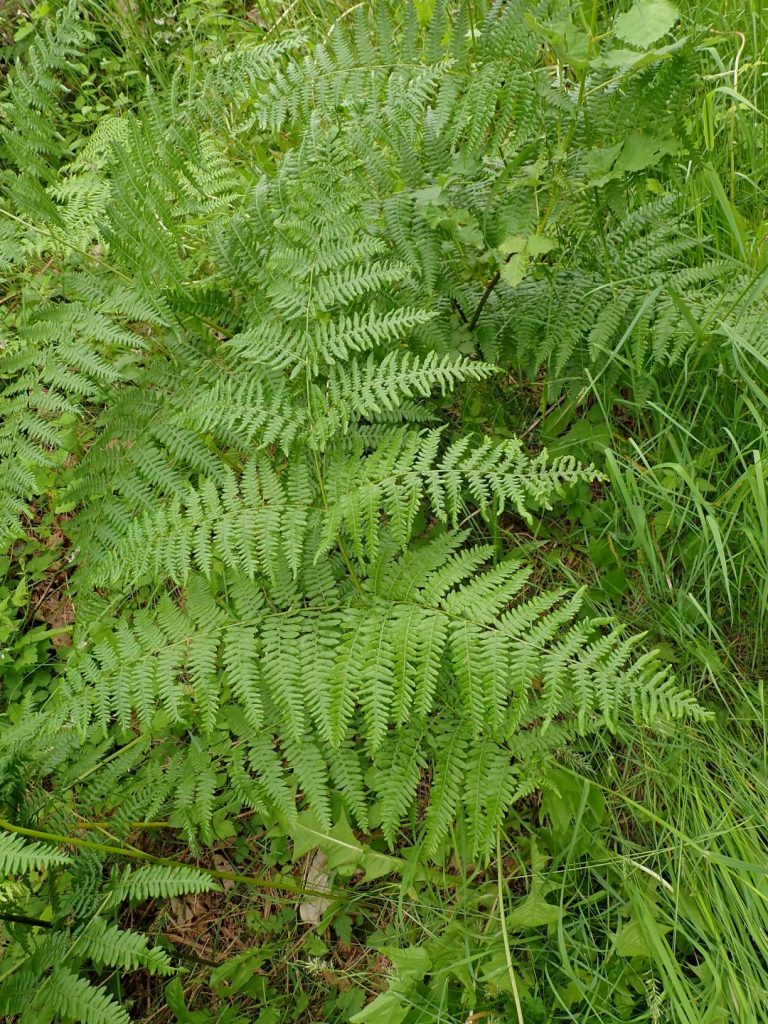Family: Dennstaedtiaceae
Common name: Bracken fern
E-flora BC: https://linnet.geog.ubc.ca/Atlas/Atlas.aspx?sciname=Pteridium%20aquilinum
Wikipedia: https://en.wikipedia.org/wiki/Pteridium_aquilinum
Bracken fern is distributed around the world, occurring almost everywhere except for in tropical and arctic regions. In our region, it tolerates a range of habitats and is often a bit weedy in nature. It tends to invade clearcuts and other open or disturbed sites. In moist sites, individual fronds (leaves) can grow to several meters tall, in dry sites, leaves might be around 40 cm tall.
The general impression of bracken fern is usually light-green, fluffy foliage – feathery leaflets borne on slender leaf-stalks.
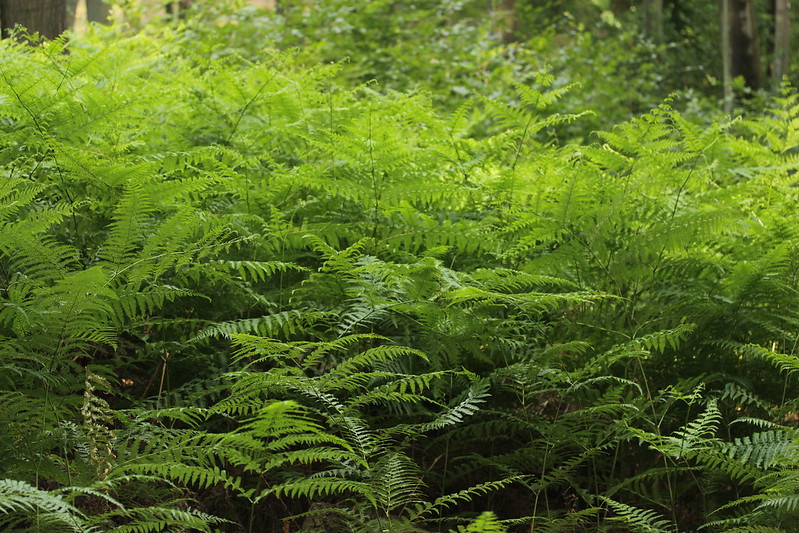
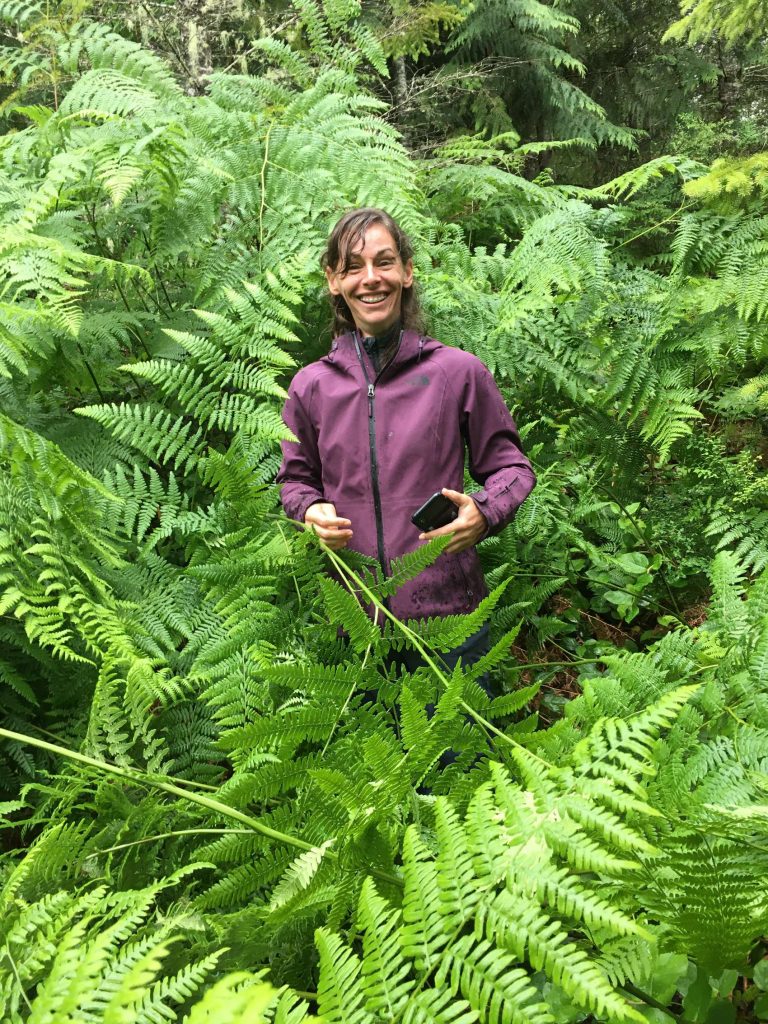
Individual compound leaves of bracken fern are triangular in shape. Note the broad base and narrowing toward the top:
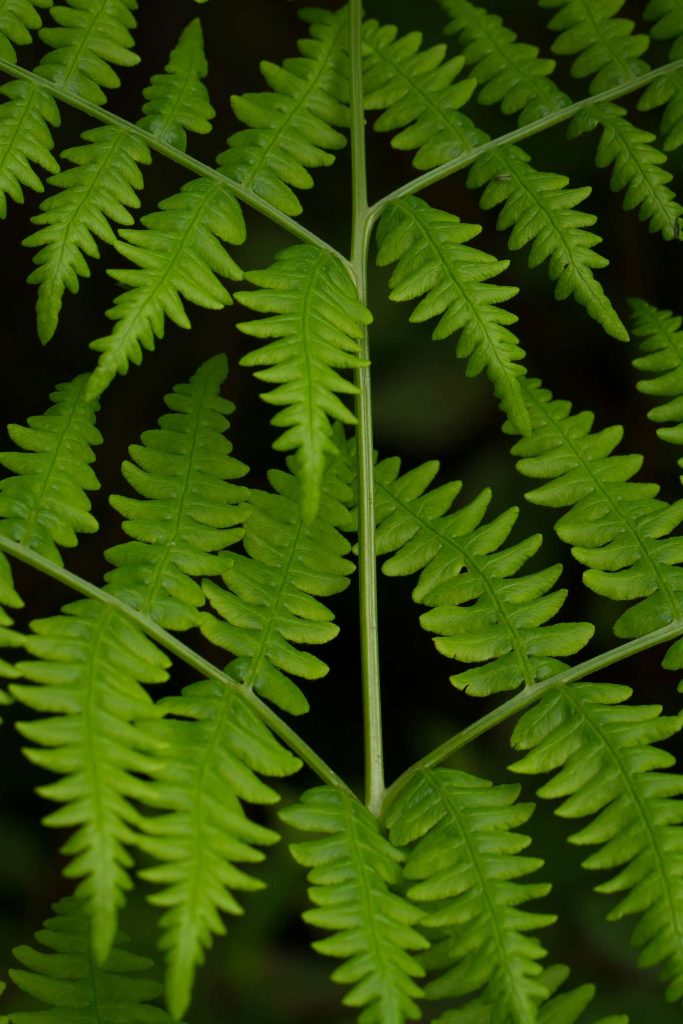
Bracken spreads mostly by branching and extending its underground stem (rhizome), from which it sends up new leaves. It can quickly cover a large area in this way. Sometimes, you will come across spore-bearing leaves within a stand of bracken. Unlike the other ferns discussed on this site (Athyrium filix-femina, Polypodium glycyrrhiza and Polystichum munitum), the sori of bracken fern are continuous with the leaflet margin, rather than distributed as dots on the underside of the leaf:


Sometimes, people can get bracken and lady fern mixed up. Both have light-green, delicate foliage. The quickest way to distinguish between them is to look at the leaf shape, as shown in the diagram below. If it’s triangular, then it is bracken fern. If it is diamond shaped, then it is lady fern.
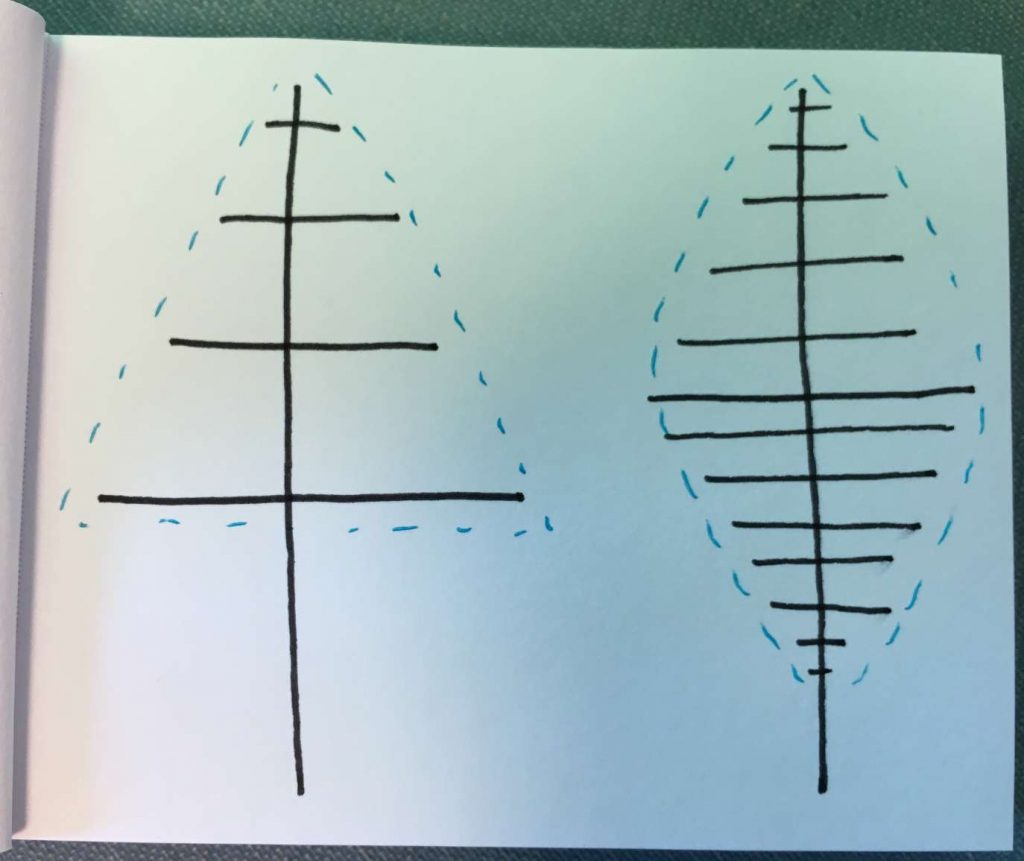
Another way to distinguish bracken and lady fern is how the whole plants grow. With bracken fern, leaves emerge singly from the ground, often forming a large stand. With lady fern, leaves are clustered together as they emerge from a central point.
